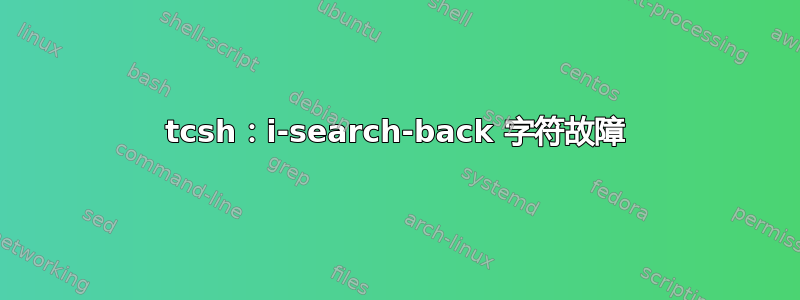
正如在其他一些答案中看到的,我将其添加到我的 .cshrc 中以使 CTRL-R 的行为类似于 bash:
bindkey "^r" i-search-back
总体来说效果很好。我的问题是,当执行 CTRL-R 后跟向左或向右箭头(编辑行)时,它将在光标位置添加“[C”或“[D”,然后我必须手动删除它。知道为什么吗?我怎样才能避免它?
答案1
正在阅读tcsh 手册页, 这是行不通的:
i-search-back (not bound)
Searches backward like history-search-backward, copies the
first match into the input buffer with the cursor positioned at
the end of the pattern, and prompts with `bck: ' and the first
match. Additional characters may be typed to extend the
search, i-search-back may be typed to continue searching with
the same pattern, wrapping around the history list if neces‐
sary, (i-search-back must be bound to a single character for
this to work) or one of the following special characters may be
typed:
^W Appends the rest of the word under the cursor to
the search pattern.
delete (or any character bound to backward-delete-char)
Undoes the effect of the last character typed and
deletes a character from the search pattern if
appropriate.
^G If the previous search was successful, aborts the
entire search. If not, goes back to the last suc‐
cessful search.
escape Ends the search, leaving the current line in the
input buffer.
Any other character not bound to self-insert-command terminates
the search, leaving the current line in the input buffer, and
is then interpreted as normal input. In particular, a carriage
return causes the current line to be executed. Emacs mode
only. See also i-search-fwd and history-search-backward.
手册页告诉您 tcsh 准备处理的唯一特殊字符是列出的四个字符,其他任何字符都被解释为
- 可以输入其他字符来扩展搜索,和
- “任何其他未绑定到 self-insert-command 的字符都会终止搜索,将当前行保留在输入缓冲区中,然后被解释为正常输入。
由于转义字符(左/右箭头的一部分)是非打印字符,因此 tcsh 会丢弃该字符,将可打印字符保留为“正常输入”的一部分。
答案2
先使用Esc 键退出搜索,然后使用左右键进行编辑。


